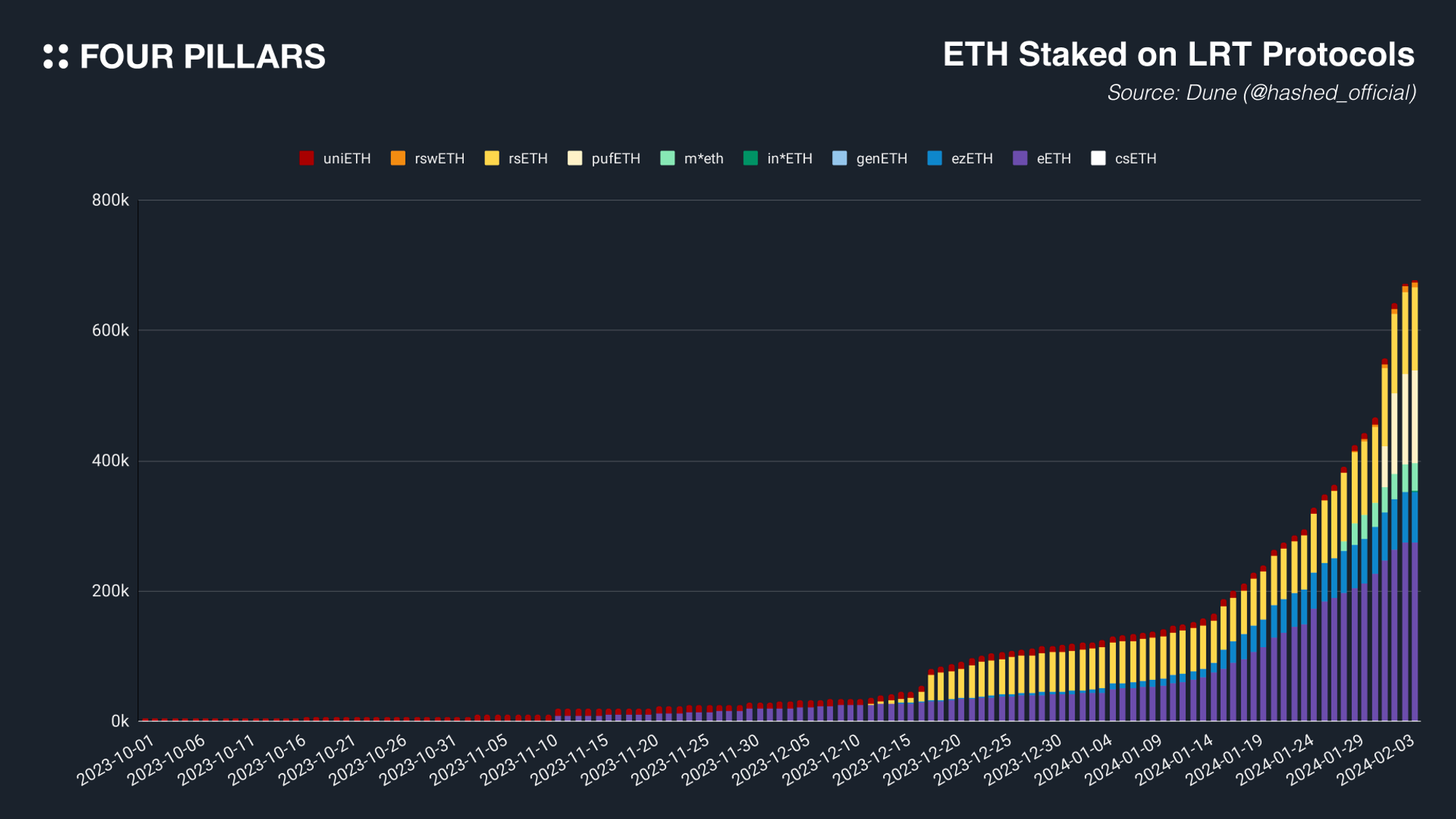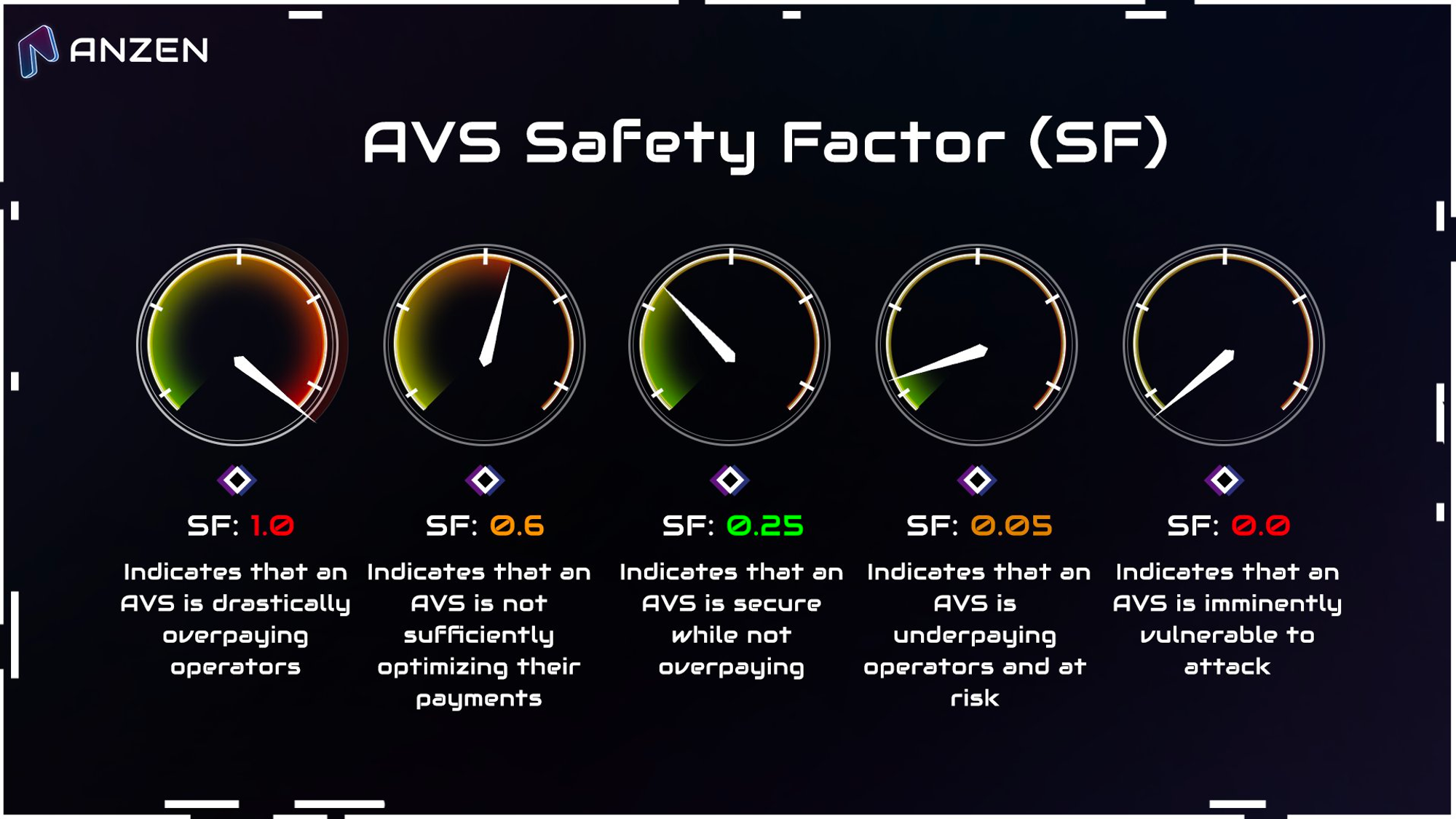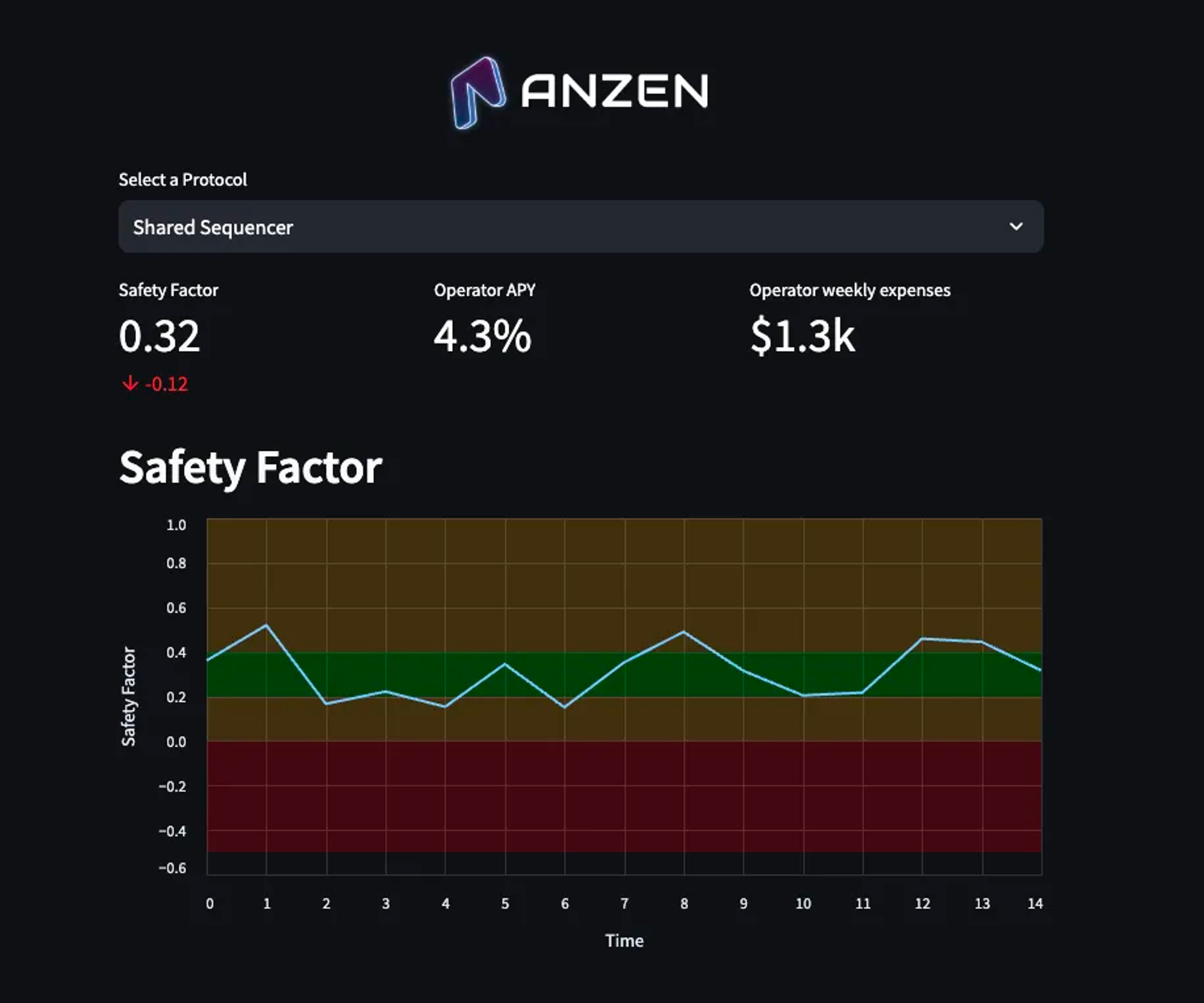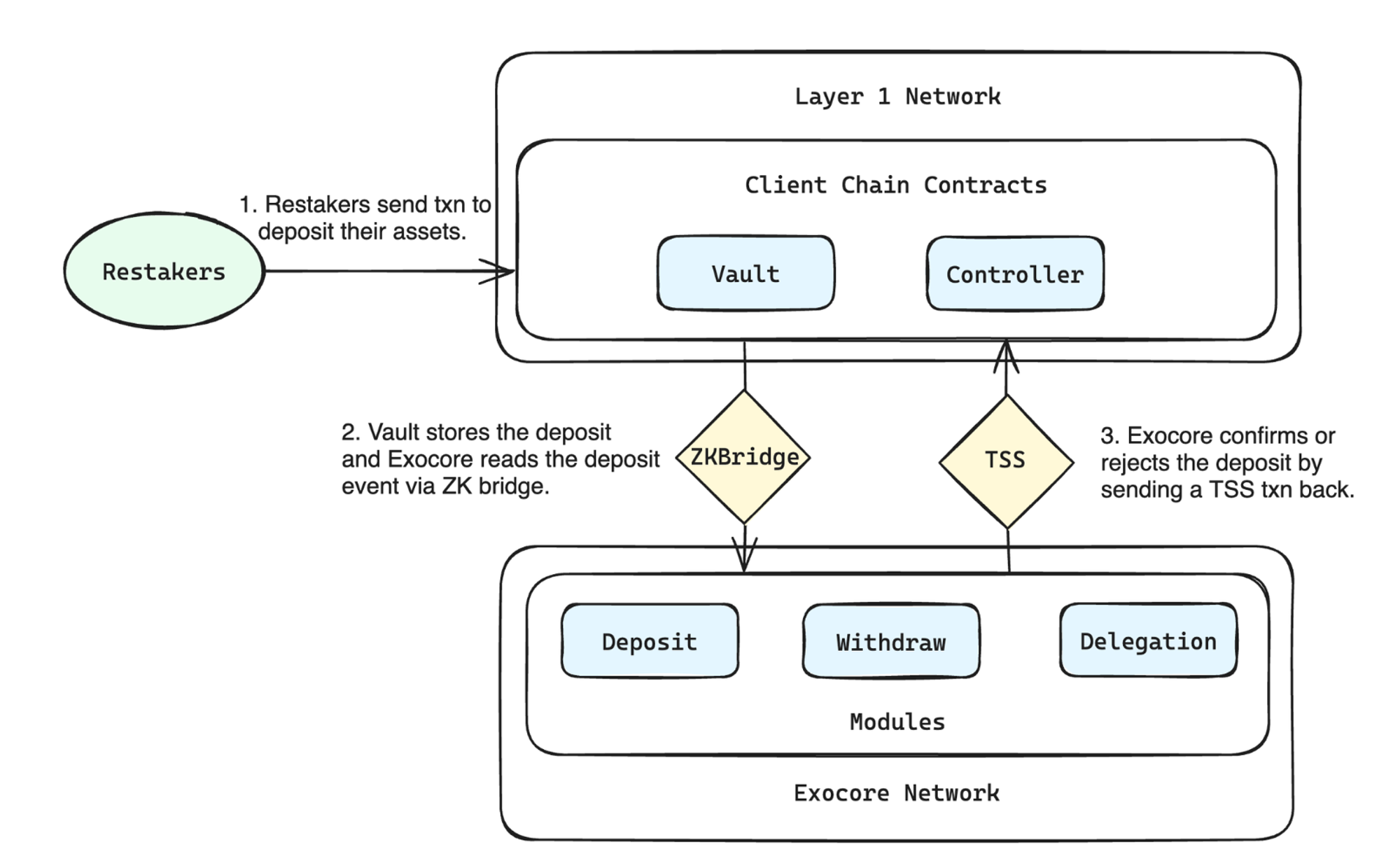

As the year progresses, the cryptocurrency industry is witnessing a continual growth in the concepts of restaking and liquid restaking. This trend shows no signs of slowing down in the near future. The novel concept ‘restaking’ is introduced by Eigenlayer. Restaking enables users to deposit their native ETH or staked assets, such as stETH, to support protocols built on top of EigenLayer
Restaking presents an attractive proposition for those seeking additional yield, in return of additional risks for stakers. With EigenLayer, restakers provide their assets to enhance economic trust by ensuring that anything that can be objectively verified is subject to penalties or 'slashing'.
A key aspect of EigenLayer's approach is the modularization of decentralized trust inherent in Ethereum. This strategy allows AVS services to utilize Ethereum's security without the need to establish their own set of validators. Such an approach significantly reduces the entry barriers in this market, making it more accessible for new entrants and innovators.

Restaking, also brings the concept of Liquid Restaking Token or LRT, which has gotten significant attention from the market these days. LRTs are essentially representations of restaking positions, akin to LSTs (Liquid Staking Tokens). Their emergence is pivotal in offering more intuitive and broader access to restaking opportunities.
The landscape of the liquid restaking market is both competitive and diverse. Currently, Ether.fi leads the Total Value Locked (TVL) rankings, closely followed by other significant players like Puffer Finance, KelpDAO, Renzo, and Eigenpie. While each of the protocols exhibits distinct features, such as differences in rewards accrued, withdrawal periods, and yield mechanisms, a clear frontrunner has yet to be established. For a more in-depth understanding, it is recommended to refer the landscape document and the comparison table of liquid restaking protocols, written by cookies.
As you may guess, LRT for restakers is analogous to LST for native stakers. The core function of a liquid staking provider is to connect depositors with reliable node operators. These operators are responsible for setting up validators and issuing receipt tokens that represent the staking positions. This process ensures a smooth and secure staking experience for the depositors. On the other side, providers of LRTs face the added challenge of managing the risk profiles of the AVSs they choose to support. This additional layer of complexity involves balancing the potential risks and returns for LRT holders. Liquid restaking, in essence, is a sophisticated form of portfolio management, wherein capital is allocated strategically across various yield opportunities to maximize returns while minimizing risks. A key goal for these providers is to develop a risk-to-reward framework that accurately represents the characteristics and potential of their LRT offerings.
LRTs are forging new paths in the integration of restaking with decentralized finance (DeFi). LRTs are not just transforming the restaking process; they are also reshaping how participants engage with the broader DeFi ecosystem. This integration allows restakers to reap the benefits of restaking while concurrently participating in the diverse opportunities within the DeFi space. The flexibility and efficiency offered by LRTs make them a valuable tool for investors looking to diversify and optimize their crypto holdings.
Another significant development brought about by LRTs is the creation of derivative financial products built on top of them. Financial products based on LRT, or LRTfi opens avenues for speculation and yield trading, adding depth and complexity to the crypto financial market. Pendle Finance has emerged as a leading protocol in this sector, offering unique mechanisms for trading yeild-bearing tokens. Pendle Finance is pioneering the separation of token principal (PT) and yield (YT), allowing for variety of trading strategies. The impact of Pendle Finance and similar protocols on the market is evident. The growth of Pendle Finance is largely attributable to the adoption and integration of LRT protocols, highlighting the significant role these innovations play in the expansion of the crypto financial ecosystem.

Source: Anzen Network
Anzen Protocol, developed by Hydrogen Labs, is an ingenious response to the challenges of maintaining economic security within networks reliant on AVS.
By adjusting the fees paid to incentivize operators, AVSs can target a certain amount of economic security they purchase. However, it is not straight-forward for new AVS and restakers to decide how much economic incentive is required to the operation of their service. AVS applications require robust economic security to function effectively. This is achieved when the Cost of Corruption (CoC) outweighs the Profit from Corruption (PfC), which was first introduced in StakeSure by Sreeram Kannan, thereby deterring malicious activities. Anzen Protocol steps in to ensure this balance is maintained by actively managing the incentives given to operators, who are vital in restaking value to keep the CoC higher than the PfC.
One of the most compelling benefits of the Anzen Protocol is its ability to offer robust security for AVSs on EigenLayer. It provides real-time automated adjustment of incentives, ensuring continuous economic security. This is supplemented by comprehensive monitoring capabilities, allowing AVSs to forecast and respond to changes in economic security.

Source: Anzen Dashboard
A novel aspect of Anzen is its Safety Factor (SF) metric. This factor assesses the economic security of an AVS by considering the value of restaked capital against the maximum profit that could be gained if the AVS's security is compromised. The SF is a dynamic measure, reflecting the ongoing balance between ensuring adequate security and avoiding the excessive expenditure of resources.
Anzen Protocol operates as an AVS itself, benefiting from the decentralized and secure nature of EigenLayer operators. It comprises various modules, each designed to calculate and adjust the SF for specific AVSs. These include the SF Modules, the Protocol Client, and Protocol Governance, all working in tandem to manage economic security effectively.
The protocol also innovatively approaches the payment to operators through a model based on the flow rate of tokens. This model takes into account various factors like the task shares, task weights, and flow epochs to calculate the optimal token distribution. It ensures fair compensation for operators while maintaining the protocol's sustainability.
In situations where the Safety Factor is inadequate, Anzen Protocol employs mechanisms like reverse Dutch auctions to progressively increase the incentive, ensuring a gradual and controlled restoration of economic security. This approach is crucial in preventing rapid reserve depletion and maintaining the protocol's long-term viability.

Source: Exocore Whitepaper
Exocore is an omnichain restaking protocol designed to address the fragmented trust and security issues prevalent in various blockchain networks. Exocore stands out with its omnichain nature, meaning it's not limited to a single blockchain. It can interface with multiple blockchains, allowing for the pooling of security across different networks. This feature is particularly important as it enables Exocore to provide a more robust and diversified security base for off-chain services.
Exocore is notable for several core features:
Multi-Token Restaking: It supports a wide range of tokens for restaking, including native tokens of L1 and L2 blockchains, liquid staking tokens, DeFi liquidity provider tokens, stablecoins, and other assets. This inclusivity allows for a broader base of assets to secure off-chain services.
Trustless Bridging and ZK Light Clients: Exocore uses ZK proofs for secure and trustless bridging between blockchains. The bridge ensures that state changes on client chains are verified securely and efficiently.
Integration Flexibility for AVS: Exocore's design allows various off-chain services to integrate with it easily. They can choose between smart contract-based integration for a permissionless approach or native module integration for deeper protocol-level interaction.
Union Restaking Concept: This unique feature enables different AVS with their native tokens to form unions, pooling their security without incurring additional costs. It's a cost-effective way to enhance security for all member services.
In terms of architecture, Exocore uses a modular design with a Tendermint-based Byzantine Fault Tolerant consensus mechanism and an EVM-compatible execution environment. This setup aims to balance security, speed, and compatibility with various blockchain applications. Exocore has potential applications in several areas, including blockchain bridges, oracles, app chains, decentralized RPC networks, and more. By enhancing the security of these off-chain services, Exocore aims to contribute to the resilience and functionality of the broader blockchain ecosystem.
Poolside is specifically designed to handle liquidity for liquid staking tokens (LSTs) and yield-bearing assets. Poolside is a Constant Function Market Maker that introduces liquidity segmentation, dividing liquidity of an asset pair into active (pools) and inactive (reservoirs) segments. This structure allows staking rewards and yields to accumulate in reservoirs without impacting the active liquidity in the pool. Poolside addresses the challenges of rebase tokens and cTokens in traditional AMMs by using reservoirs to manage the accumulation of rewards and yield, maintaining accurate pricing and maximizing swap fee potential for liquidity providers.

Source: Poolside - Core Concepts
Reservoirs are additional token balances that represent inactive liquidity for each token in a pair. When a value-accruing token grows in value, that extra value accumulates in the reservoir, not the main pool. They accumulate staking rewards or yields, preventing these gains from being lost to arbitrage and maintaining accurate pricing in the active liquidity pools. Rebasing tokens in Poolside, like stETH, adjust their supply to reflect rewards or changes in value. Instead of affecting the active liquidity pools, these adjustments are captured in the reservoirs, preserving the value for liquidity providers and maintaining stable pricing dynamics. Additionally, Poolside implements wrappers for fixed-supply tokens, converting non-rebasing tokens into a format that harmonizes with the platform's rebasing and reservoir system. This integration streamlines the process and maximizes the efficiency of Poolside's unique approach to liquidity management.
Single-sided liquidity and reservoir guardrails are key features in the Poolside platform. They allow liquidity providers to rebalance pools and reservoirs by adding liquidity from one side only. To ensure fair and stable operations, Poolside employs several guardrails like Time-Weighted Average Price (TWAP) implementation, volatility circuit breakers, and reservoir throttling. These mechanisms collectively help in maintaining price stability and preventing manipulation, ensuring the reservoirs and liquidity pools function effectively and efficiently.
The idea of restaking doesn’t need to be restricted to only Ethereum-related ecosystem. Despite the benefits of restaking, the concept has largely not yet expanded beyond the Ethereum ecosystem. However, there is a huge potential for restaking on other chains. Especially Solana already has a massive amount of staked assets, with many prominent staking protocols already offering liquid staking tokens (LSTs) and receipt tokens that can be used for various purposes while a user’s original assets remain staked.
Picasso Network is set to enable restaking on Solana through its innovative Solana <> Inter-Blockchain Communication (IBC) connection. This connection allows users to stake various tokens, including SOL, mSOL (Marinade's liquid staking token), jitoSOL, etc. These tokens can be staked with validators of the Solana <> IBC connection, enhancing both the yield for users and the security of the network.

Source: Composible Finance Github
The guest blockchain concept is one of core features of the Picasso Network. It is essentially a layer that overlays the primary blockchain (in this case, Solana), enabling functionalities that the primary blockchain might not natively support. This includes the ability to interact with the IBC protocols, allowing for cross-chain interactions.
This architecture is designed to integrate blockchains that are otherwise incompatible with certain protocols, like IBC. Validators on this guest blockchain are crucial, as they generate blocks and relay state proofs to other chains, facilitating a seamless flow of information and assets across different blockchain networks.
A few noteworthy concepts introduced in the guest blockchain is as follows:
Bonding and Validator Dynamics: To maintain network integrity, validators on the guest blockchain are required to post a bonded stake. This mechanism safeguards against malicious activities and ensures committed participation in the network's validation process.
Slashing and Jailing Protocols: Ensuring the reliability of validators is crucial. The guest blockchain incorporates slashing mechanisms for validators failing to meet their responsibilities. In more severe cases, jailing protocols are enacted to maintain the network's robustness.
Fishermen Role: A unique aspect of the guest blockchain is the role of "fishermen," individuals responsible for monitoring validator behavior and reporting any discrepancies. This added layer of oversight further fortifies the network's security.
Also, the Picasso Network utilizes a concept called the "vault," which is integral to the restaking process. The vault is where users' assets are pooled and managed for restaking purposes. It plays a vital role in organizing and securing assets that are part of the restaking cycle. The management of these vaults is crucial for maintaining the efficiency and security of the restaking process, as well as for ensuring the integrity of the assets held within.
Thanks to Kate for designing the graphics for this article.
We produce in-depth blockchain research articles

The approval of the Ethereum ETF could boost yields for Ethena's synthetic dollar, sUSDe, much like the yields observed following the Bitcoin ETF approval.

Bluefin rapidly grew by transitioning through Arbitrum and finally settling on Sui. Bluefin now has $26.3 billion in trading volume and holds 70% of the market share, showcasing strong user base and liquidity Bluefin plans to become a comprehensive decentralized trading platform by introducing features like a DEX aggregator, easy on-ramps, and cross-chain functionality. Similar to Jupiter on Solana, Bluefin aims to leverage Sui's growth to achieve expansion and generate synergies

SynFutures is a decentralized exchange for perpetual contracts that combines AMM and order book features to provide efficient liquidity, improved price stability, and significant trading volume growth following its migration to Blast L2

Let's take an in-depth look at the structure of Ethena's USDe, which claims to be an on-chain dollar asset, and the problems that USDe aims to solve.